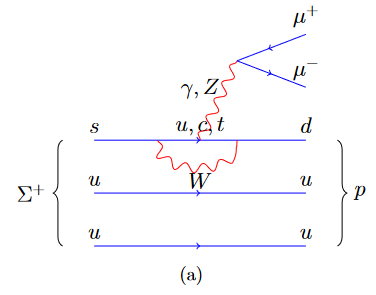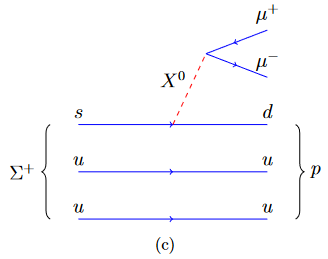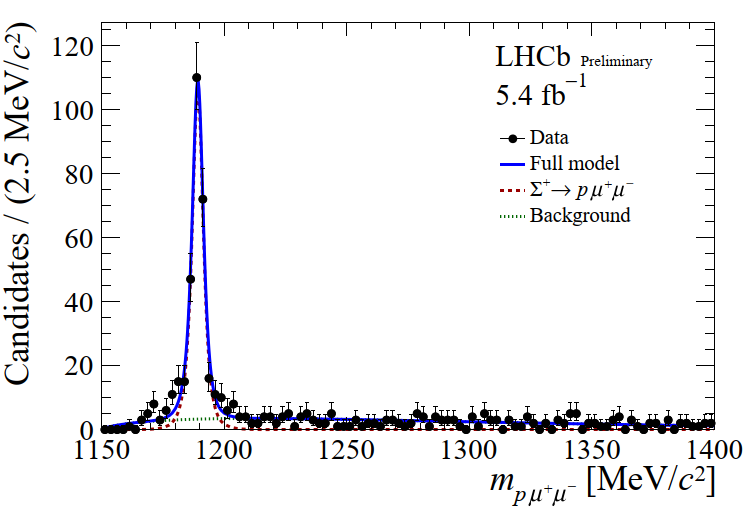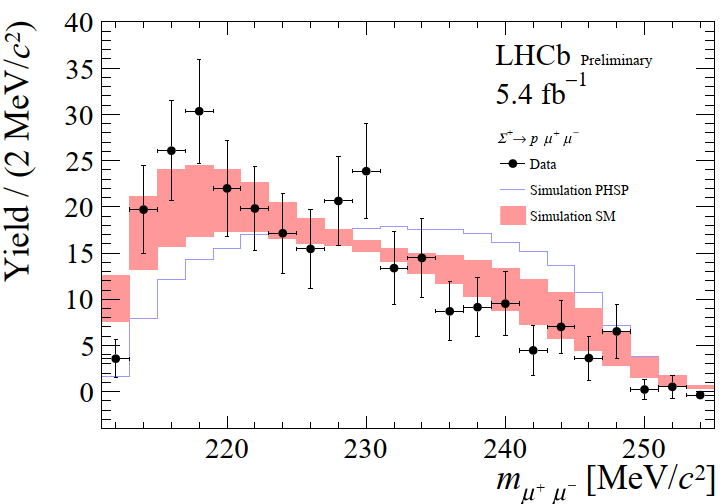The LHCb collaboration reported the observation of the Σ+→pμ+μ– rare decay at the XV International Conference on Beauty, Charm, Hyperons in Hadronic Interactions (BEACH 2024) in Charleston, South Carolina, USA. This is the rarest hyperon decay ever observed.



Rare decays are among the most promising tools for discovery of physics beyond the Standard Model (SM) of particle physics. The Σ+→pμ+μ– decay is a so-called flavour-changing neutral-current process that in the SM is allowed only at loop level. The decay rate could be significantly modified by the presence of new physics (NP) effects. The Feynman diagrams show the SM (a and b) as well as possible NP (c) contributions to the Σ+→pμ+μ– decay.

The pμ+μ– mass spectrum is shown in the image above. A large peak at the Σ+ mass containing 279±19 events is observed with high significance.
The bacground-subtracted μ+μ– mass spectrum is shown in the image below and is compared with different types of simulation. The interest for the dimuon mass spectrum in the Σ+→pμ+μ– decay arose after first evidence for this decay was announced in 2005 by the HyperCP (E871) collaboration reporting an unexpected hint of a structure in the dimuon mass distribution, although with three events only. In fact, the dimuon mass in the three events was almost identical, hinting at the existence of a possible narrow resonance decaying into a pair of muons. However, LHCb data do not show any significant peaking structures in the dimuon mass region highlighted by HyperCP, hence disconfirming the hint.

The results reported here are obtained from the analysis of pp collision data recorded by the LHCb experiment in Run 2 at a centre-of-mass energy of 13 TeV, corresponding to an integrated luminosity of 5.4 fb-1. Previously LHCb reported a 4.1σ evidence for this decay using Run 1 data. With respect to the Run 1 analysis, several improvements have been implemented, namely more efficient particle identification, larger simulation samples and, most importantly, trigger efficiency higher by a factor of about 10, in addition to the increase in statistics due to higher cross-section and luminosity.
A precise determination of the branching fraction is left for a future publication. With the present signal yield, in addition to a measurement of the integrated and differential branching fractions, other measurements are possible, such as those of charge-parity and forward-backward asymmetries.
Read more in the LHCb presentations at the BEACH conference, in the conference note, as well as in the CERN update.
